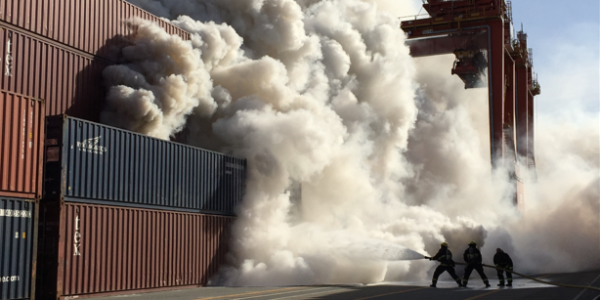Do you know what shelter-in-place is?
The recent chemical fire at Port Metro Vancouver is another reminder that we need to be prepared.
What is shelter-in-place?
Shelter-in-place (SIP) is the practice of remaining safely indoors during an outdoor release of a hazardous substance. The goal of sheltering-in-place is to reduce the movement of air into and out of a building until either the hazard has passed or other emergency actions can be taken. It entails closing all doors, windows and ventilation/HVAC and taking immediate shelter in a readily accessible location that puts as much indoor air and mass between the individual and the hazardous outside air.
During the incident
- Go inside and close all windows and doors.
- Consider turning off all sources of outside air, such as air conditioners, ventilation fans (kitchen, bathroom, built in vacuum systems, gas fireplaces, gas stoves, etc). Note: Before doing so, consult site procedures and/or on-site Facilities Management department if available.
- Keep your radio and/or TV turned on for any new information.
- If your home is drafty or poorly sealed, dampen towels and block the crack under exterior doors. You can also tape plastic sheeting around doors and windows to further reduce airflow.
- Turn down thermostats to the minimum setting and turn off air conditioners.
- Do not use fireplaces. Close all dampers.
- Avoid using the telephone, except for emergencies, so that you can be contacted by company emergency response personnel.
- Do not leave until told to do so.
After the hazardous substance has passed through the area you will receive an “all-clear” message from emergency responders or your local government.
More info
For more information about Health Emergency Management BC, please visit our intranet page.

